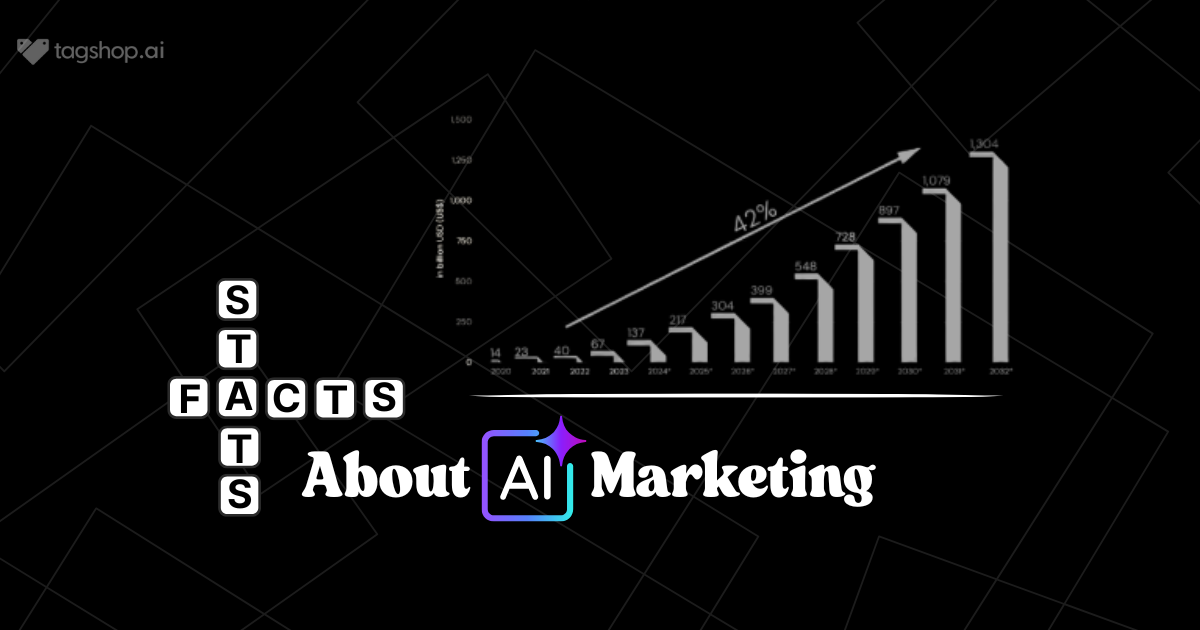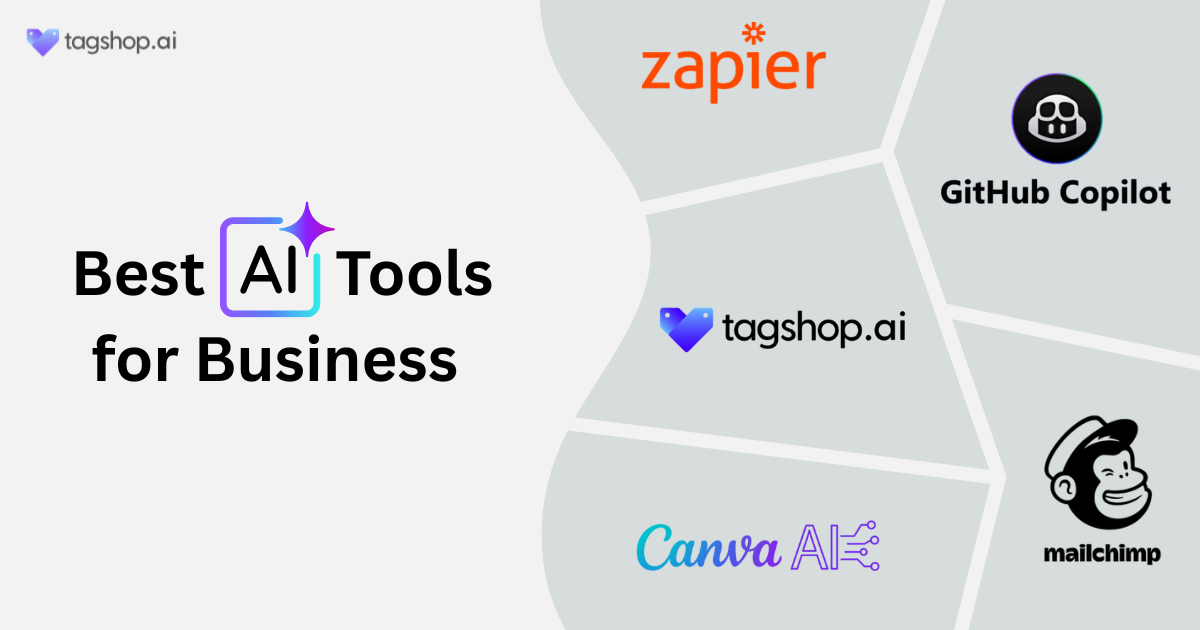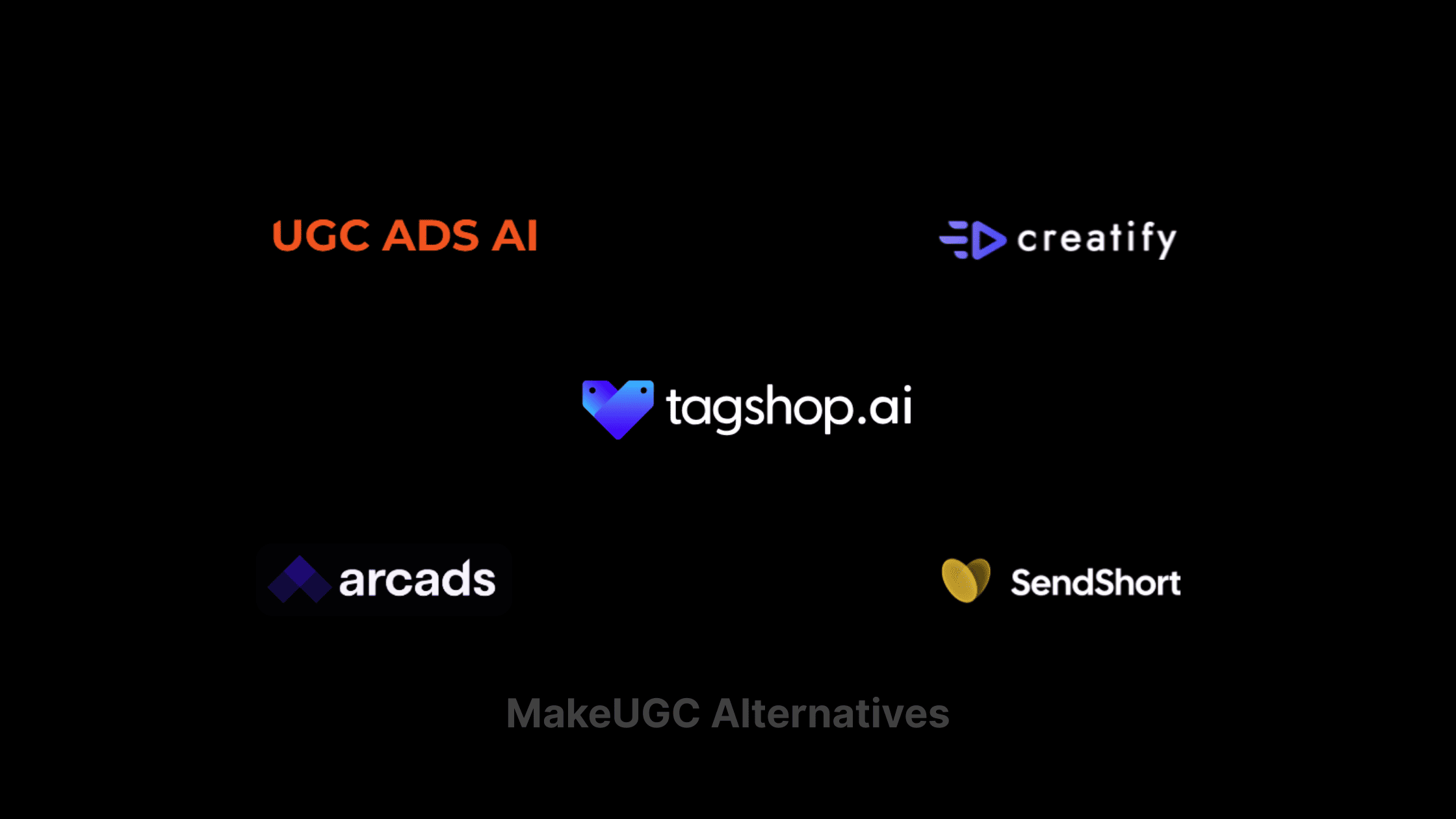Stats and Facts About AI in the Marketing World
In the film Her (2013), Joaquin Phoenix falls in love with an AI who understands him better than any human.
Now imagine that, but for your customer.
AI in marketing doesn’t just automate tasks.
It understands your audience: what they want, when they want it, and how they prefer to be addressed.
It’s not creepy-romantic. It’s creepy-effective.
This is exactly why we bring you this blog: to show how stats and facts aren’t just numbers, but your trump card in the business game.
Today, 80% of marketing leaders agree: AI is essential for success. Since ChatGPT’s debut in 2022, AI marketing budgets have climbed 25% between 2023 and 2025. And by 2028, the AI marketing industry is projected to hit $107.5 billion, growing at a rapid 28–36% CAGR.
TL;DR: The bots are here. And they’re really good at selling.
Let’s explore how they can benefit your business.
AI Across Formats: Videos, Text, Images & Automation
AI is omnipresent, like magic at Hogwarts. You may not always see it, but it runs the whole castle. Similarly, AI’s integration isn’t limited to text or even automation; it has also extended to images and videos. We will consider a few examples of the various places where it has been found.
A. AI Video Content
An estimated 3.88 billion people watch videos online, which is one in nearly every two people on Earth. This explains why AI-generated videos such as AI UGC videos surged 220% in 2025, making video production scalable.

Let’s consider a real-world scenario to understand this concept better. Anton Pavlovsky, CEO of EdTech startup Headway, spent three years on the fence about AI. Then, a trip to Silicon Valley changed everything. He met many people who made him realize that AI wasn’t just hype. It was the next significant shift after the advent of the Internet and smartphones.
He returned, built an AI-first team, and started experimenting with tools like Midjourney.
Within six months: 3.3 billion impressions and a 40% boost in ROI, all while slashing production costs. Now? He’s all in and for AI.
Another interesting study in the world of Video Marketing with AI found that AI-generated titles significantly boost content consumption, increasing watches by 1.6% and watch duration by 0.9%. When producers adopted these titles, the increases jumped to 7.1% and 4.1%, respectively.
B. AI-Generated Text
Texts weren’t left unscathed either, with AI and content working hand-in-hand to brainstorm ideas, generate content, and refine it. There are multiple ai script writers available that can help you in different tasks.

AI isn’t just speeding up content creation; it’s improving performance in subtle but powerful ways.
On a central short-video platform, AI-generated titles boosted views and watch time, especially when creators edited them. Just adding AI titles made videos 41% more likely to be seen, improving algorithmic discovery. Proving the power of human-AI collaboration.
Zoom out, and the trend is clear:
- 64% of marketers now use AI to brainstorm content and gain ideas from preferences, consumer activity, and trending topics.
- AI slashes production time by 50%
- In 2025, 45% of blog posts were AI-generated or AI-optimized, indicating that marketers have already been utilizing AI to meet their targets.
- AI-written subject lines lift open rates by 26–42% which is good since most emails don’t even meet their open rate if the subject lines aren’t catchy enough.
C. AI Visual Content & Images
We have already covered the impact of statistics and facts through texts and Videos. This brings us to visual content and images and how AI has changed their game forever.

Today, 55% of marketers utilize AI for image recognition and visual analysis to identify the most effective imagery and optimize creative decisions at scale. It has been super beneficial in industries like Healthcare for disease diagnosis and detection, as well as in the manufacturing industry for quality control and maintenance.
Visual personalization, powered by AI, boosts click-through rates by 25% as brands tailor images to individual users in real-time. This has been observed in various industries like travel, ecommerce, and the entertainment space, with AI analysing user data for improved user experience.
And the results speak for themselves: 35% of Amazon’s revenue comes from AI-driven product recommendations, many of which are based on visual cues such as thumbnails, browsing behavior, and image context.
D. AI Task Automation
Letting AI tools do tasks provides marketers with the Free Time they have been looking for. It takes the Boring Stuff Off Their Plates. Got a meeting but a 40-page report to analyze? Let AI handle it.

From data crunching to inbox sorting, 58% of marketers now rely on AI to handle repetitive tasks such as scheduling, segmenting, and analyzing. Now, time-consuming work that doesn’t require a human brain, just an intelligent system.
Even customer service is getting lighter. AI chatbots now manage approximately 80% of routine support questions, allowing your team to focus on the issues that truly require a human conversation.
And the impact?
Big.Teams using AI automation are seeing:
- 451% more leads
- Up to 40% productivity boosts
- And 75% report higher conversions
Metrics & ROI: What AI Delivers
We have covered everything where AI comes in, including Texts, Images, and even Videos. But let’s talk numbers, what they are, and what they depict, for the World of AI.
It has been noted across various platforms that, on average, using AI results in a 30% increase in Return on Investment.
And Personalized AI recommendations? They drive 15–45% more revenue and 5–8 times returns, with AI tracking user data across platforms, thus driving up revenue while also improving retention by up to 57%.
Then there’s the advertising world where 72% of digital ad spend now goes to AI-driven programmatic ads, and for good reason. They boost click-through rates by 25–27% making your content engaging and easier to click on.
It’s a win-win, based on the world of AI and the results it delivers.
Real‑World Examples & Case Studies
Now, we have talked enough about just data and numbers. Let’s read a few case studies to see how many businesses have reaped the benefits of AI.
Earlier in this blog, we discussed Headway, the Ed-tech startup that saw a 40% increase in ROI, thanks to the help of AI.
In a similar vein, the following is an example of Reddit and its actions.
On June 16, 2025, Reddit introduced two new AI-powered ad features to help brands engage more effectively with its community-driven platform. The first tool, “Reddit Insights powered by Community Intelligence,” offers real-time trend tracking and campaign testing for marketers. The second, “Conversation Summary Add-ons,” enables brands to display positive user comments directly under their ads, thereby boosting credibility and engagement.
France’s Publicis Groupe is already using Reddit Insights, with a broader rollout to ad agencies expected in July.
Similarly, EXL, a 26-year-old digital solutions firm, made its Cannes Lions debut, highlighting how it leverages AI and data to transform industries such as insurance, banking, and sports.
Exec VP Narasimha Kini shared how EXL’s AI tools helped major sports leagues boost fan engagement by 35% and marketing ROI by 60%. The company also built a custom insurance-focused LLM with Data
Privacy and Security:
AI’s reliance on large amounts of data raises concerns about privacy violations and the security in AI, especially when handling sensitive information.
NVIDIA to tackle complex claims processes.
From customer experience to supply chains, EXL is helping brands unlock growth and resilience through AI.
Challenges & Ethical Considerations
Each coin has two sides, although AI brings with it numerous benefits. Once we flip the coin, it does bring its share of ethical considerations and challenges.
1. Ethical Considerations:
AI perceives the world in binary terms, i.e., in black and white; therefore, understanding nuances, contexts, and cultures is a challenge for AI. It can lead to negative consequences, as it fails to grasp the subtle complexities of human situations.
2. Data Privacy and Security:
AI’s reliance on large amounts of data raises concerns about privacy violations and the security of sensitive information.
3. Transparency and Explainability:
There is a lack of transparency regarding AI algorithms, which erode trust and make it challenging to identify and correct errors or biases.
4. Potential for Misuse:
AI can be used for malicious purposes, such as developing autonomous weapons, creating deepfakes, or manipulating public opinion. It’s vital to consider the potential for misuse and implement safeguards
SHOCKING STAT: Despite the AI buzz, 32% of marketers say their organization hasn’t fully implemented it, and 1 in 5 can’t identify which use cases drive the highest ROI, highlighting a growing gap between AI potential and real-world execution.
Future Outlook & Strategic Advice
What’s Next: Where AI in Marketing Is Headed, Explained with Numbers.
AI’s not slowing down — and neither are the people using it.
- 85–92% of marketers plan to increase their AI investment by 2026
- By 2025, AI agents are expected to handle 95% of customer interactions.
- In India, 70% of CEOs believe that generative AI will reshape value creation within the next three years.
- EY projects a 41–45% jump in content productivity, thanks to AI.
Conclusion
AI isn’t the Future, it’s the Now.
From AI-written subject lines that get opened, to image recognition that powers billion-dollar recommendations, it’s clear: AI isn’t just helping marketers work faster. It’s helping them work smarter.
And yet, not everyone’s ready. A third of marketers still haven’t fully implemented AI. One in five can’t spot their highest-ROI use case. The opportunity is massive, but only if you move with intention.
We noticed something big in the blog: AI adoption surged from 70% in 2023 to 88% in 2025, and the impact is undeniable. Brands saw a 30% boost in ROI, 50% more sales (yes, half more!), and over 40% gains in productivity thanks to all the time saved. This isn’t just cool, it’s a full-on Business Glow-Up.
So here’s your takeaway: Use AI to clear the clutter, create with speed, and test with precision. Pair it with human instinct, and you’ll unlock a competitive edge no manual workflow can match.The AI era isn’t coming. It’s already here, and the most innovative marketers are already on board.
The only question left: Are you?








